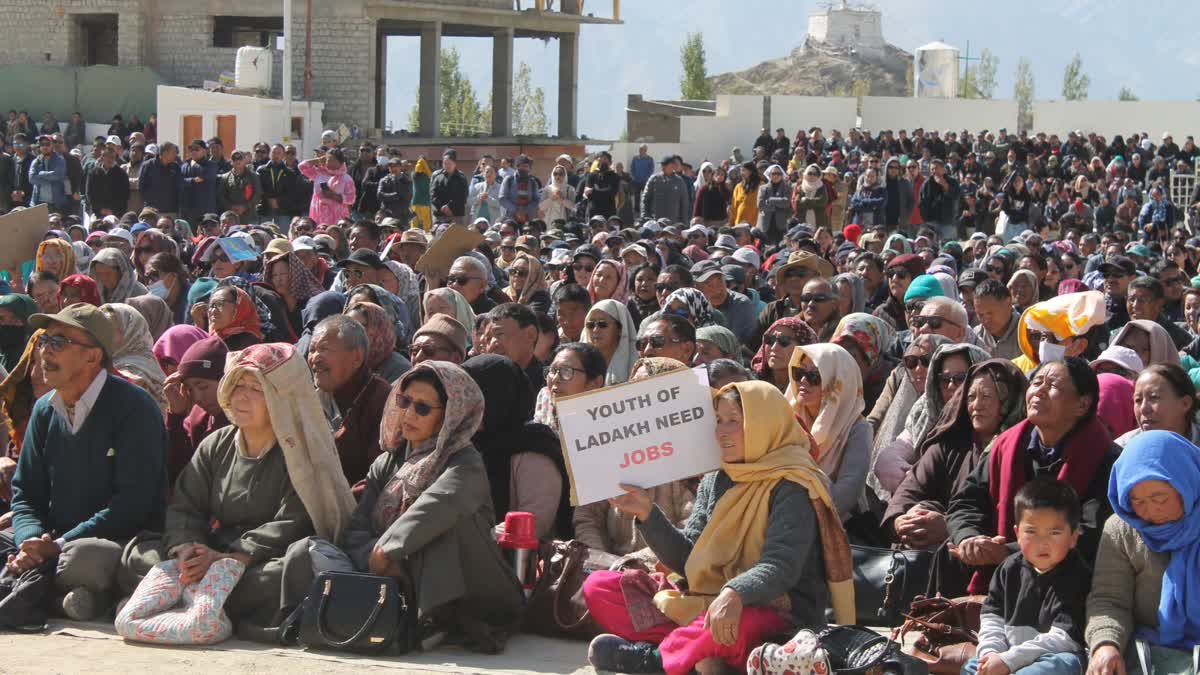Leh: Ladakh is grappling with one of the highest unemployment rates in India. According to data from the Ministry of Statistics and Programme Implementation (MoSPI), Ladakh stands second in the country for graduate unemployment, with a staggering 26% of its educated youth struggling to find jobs in 2022-23.
For a region with a population of just about 3 lakh, this statistic is not merely a number but a crisis threatening the dreams and aspirations of its young generation. The reliance on government jobs, limited private sector opportunities, and unresolved policy issues have compounded the challenges, leaving Ladakhi youth at a critical crossroads.
Tundup Thinles, a former president of All Ladakh Unemployed Youth Association (ALUYA), has brought to light the alarming state of unemployment in the region. The issue has reached critical levels, with recruitment processes stalled for years and systemic barriers further deepening the crisis.
“Today, there is frustration among the youth of Ladakh. Not a single gazetted post has been filled in the last six years. Even non-gazetted recruitment has been on hold for over a year,” Thinles stated. The root of the problem, he explained, lies in the unresolved question of domicile status.
With Ladakh’s transition to a Union Territory (UT) in 2019, hopes for development and opportunities soared. However, the lack of a clear domicile policy has created a significant roadblock. The Gazetted Recruitment Rule’s Clause 4, which previously addressed residency requirements, is no longer in effect. This has led to a standstill in filling both gazetted and non-gazetted posts.
According to the Ministry of Statistics and Programme Implementation (MoSPI), Ladakh stands second in India for graduate unemployment, with a staggering 26% unemployment rate. Considering the region’s population of approximately 3 lakh, the percentage is deeply concerning.
“Unlike other parts of the country, Ladakh relies heavily on government jobs. Private sector opportunities are limited and seasonal, mainly concentrated in urban pockets. The nature of unemployment here is different and severe,” Thinles added.
Thinless emphasised that filling the 23,000 government posts apportioned to Ladakh after its UT status could significantly ease the crisis. However, the process requires a structured recruitment policy and the resolution of domicile issues.
“Employment generation programs are also crucial. If the Ladakh Autonomous Hill Development Councils (LAHDCs) could focus on rural employment in sectors like food processing, animal husbandry, and cooperative societies, it would be a game-changer,” he suggested.
Thinless also pointed to the pressing need for skill enhancement among Ladakhi youth. Establishing skill development institutes and strengthening Industrial Training Institutes (ITIs) could help bridge the gap between education and employability, he added.
